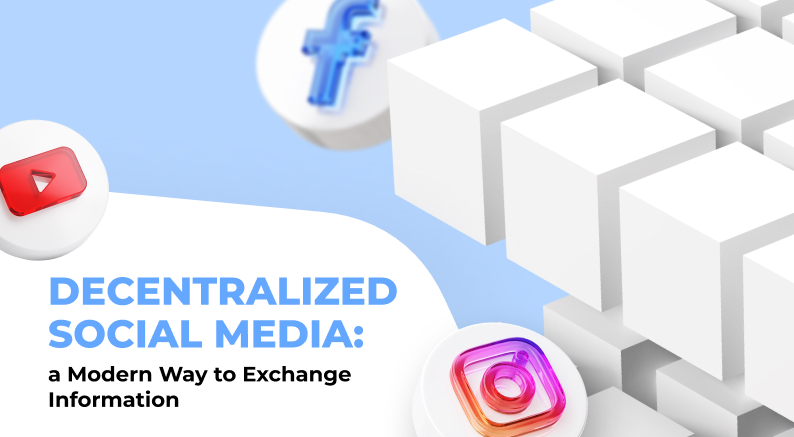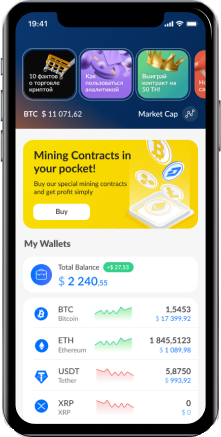Decentralized Social Media: a Modern Way to Exchange Information

No doubt, we’ve already entered an era of decentralization. We haven’t yet totally accepted and adapted an idea of NFT or Metaverse but we seem to face a latter-day blockchain phenomenon that may become the greatest sensation of the season and an incoming crypto breakthrough. These are decentralized social media that don’t have any supervisory or governing authority unlike other popular centralized platforms like Twitter or Facebook. And numerous influencers of the crypto world express their opinions on this topic. Let’s read them.
Experts Opinions
Yung Beef, the Content Lead & Community Manager at Subsocial is sure that centralized social media are cheating on their participants. According to him, centralized platforms play with loaded dice. Their users often depend on them as they earn their living through their activities on this platform but their interaction is absolutely non-transparent. Bans without explanation and obvious guilt, unjust monetization, incomprehensible delivery and censoring of contents, and apparent dependence on the platform’s owners’ views and position are the results of centralization.
Stani Kulechov, the founder of the Aave protocol, asserts that there is a strong public need for an opportunity for transparent and censor-free relations between authors and content consumers. It’ll be great for both sides and facilitate their interaction.
Besides, Kulechov’s words do not contradict his deeds. Last summer he announced that Aave might build Twitter on Ethereum.
Michael Marra, CEO and Community Director of the remarkable entrepreneur platform Entre, insists that decentralized social media are all about returning power to users. He identifies censorship and monetization as the main problems of centralized projects.
Some Examples on the Topic
Social media of any type are based on the same principles of performance. Their users can interact there in different ways using their accounts. But they are totally different in the way they treat their users and content. Traditionally, the users create and put out content online though they have no rights to it then. All these pictures, posts, movies, audio, channels, and profiles belong to the platform owners and can be deleted, transferred, or changed at any time they want for any reason. All big players on the market demonstrate the same attitude and try to concentrate too much power on a single executive.
But now we face quite another matter. DSM are built on blockchains; nobody can deny access to someone they don’t want to see and authors have absolute control over their work.
Have a look at DeSo. It is announced as a blockchain that is dedicated to providing decentralized social applications to one billion users in a distributed manner. Each piece of data is stored on-chain. Accounts can be shifted from one application to another with all followers, and creators have plenty of opportunities to thrive. So the platform is absolutely creator-friendly.
There are no restrictions on who is able to run a node and check a feed. According to their official information, there are over 150 projects running nodes and building apps on DeSo today.
Entre (a short version of “entrepreneur”) is a social Web3 application on DeSo that empowers individuals and companies to easily connect and work with the people and resources they need to be successful in the digital world. With over 50 thousand current users (and rapidly growing,) this network provides tools that give an opportunity to follow and communicate with thousands of creators, entrepreneurs, and many other categories of Entre admirers. Professionals may find authentic, high-paying remote opportunities there with the job list updated daily. There are lots of tools that make this platform similar in a way to such giants as LinkedIn or Twitter.
An off-shoot of Aave, the Lens Protocol introduces another variant of a crypto social network. It presents a decentralized and composable social graph that functions on blockchain. An interesting option of this project is an unusual utilization of the idea of NFT. When a profile on the platform is created, it becomes tokenized. The Profile NFT is considered to be the main object in the Lens Protocol. The ownership over this NFT provides a creator with control of the content. The Profile NFT keeps the history of all of the content generated by its owner and it cannot be altered or deleted by someone else.
Subsocial is another example of this challenging phenomenon of blockchain. It positions itself as a parachain designed specifically for social networking. The users are encouraged to be socially active and benefit from options for monetization. This decentralized social network takes forward an idea of cross-chain interactions, fair treatment of content makers and content consumers, and data sharing between dapps.
We’ve viewed some examples of crypto social media platforms and now let’s examine a quite different approach of Theta and Audius. They make an attempt to integrate social media features into a decentralized entertainment infrastructure.
Theta is designed mainly to introduce a more efficient way of content delivery in a global peer-to-peer network. Even one of the YouTube co-founders Steve Chen reportedly paid tribute to this project recognizing its potential. Its main advantages are lower costs for content delivery alongside with better picture quality and download speed for the end users. The platform performs similarly to YouTube allowing the creators to stream videos while followers can comment on them.
Audius is a music streaming and sharing platform that represents a fully decentralized community of artists, fans, and developers. It gives artists a chance to interact with their fans directly without centralized infrastructure.
Is It Really So Cool?
The main weak point of any decentralized social media blockchain is moderation. Expurgation has not only downsides. It is a necessary tool to eliminate illegal and criminal content, fraud, or disinformation. When it goes about traditional media, it is clear how the monitoring and enforcement mechanism is put to action. But what about their decentralized analogs?
All respondents were unanimous in their response: their projects are censorship-resistant and remain neutral to users’ behavior. Marra supposes that the community is the force that is able to influence the reputation of wrong doers and this will recoil on the position of their content and overall performance on the platform. In any case, other participants will be warned and will be able to properly build their interaction with this person. Kulechov also takes a stand for community-driven moderation. According to Yung Beef, Subsocial provides three-level moderation and a final decision is taken by an on-chain vote.
It is necessary to mention that centralized platforms are not able to overcome this problem despite severe censorship and strict moderation. Such a level of responsibility of crypto community members is apparently a remote dream.
Money Is Still Important
Monetization plays an important role in social media development. Traditional platforms cannot demonstrate much balance and transparency in money distribution. But now it seems that the game rules are changing.
Yung Beef admits that the issue of monetization is a greater attraction for content makers than the absence of censorship. He predicts the advent of a small perks economy.
Kulechov insists that Lens Protocol tries to interfere in monetization as little as possible. The project provides monetization based on content collection and amplification.
Marra points out that Entre is focused on giving an opportunity to a content maker to earn DESO tokens as currently, this is the only crypto asset that can circulate on the app.
Theta has two types of tokens, THETA and TFUEL. TFUEL is directly used in rewarding community members for the activities on the platform. Audius also provides its own AUDIO token to satisfy the artists’ desire for reward.
To sum it up, it is necessary to recognize that a new powerful player has appeared on the blockchain field. Will decentralized social media become the next big thing after cryptocurrency? Let’s follow the development of events.






